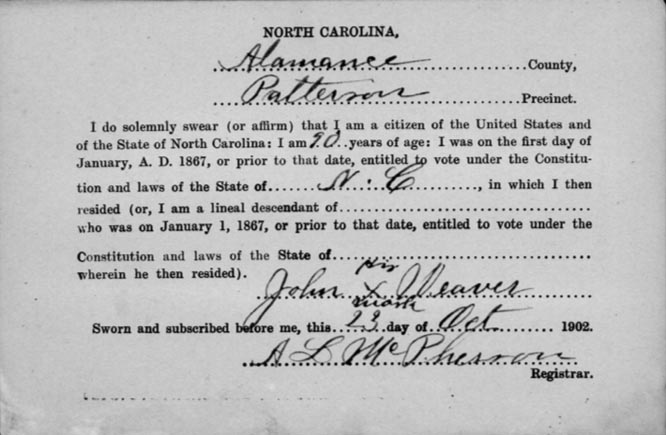North Carolina's 2013 voting law was struck down yesterday by the U.S. Fourth Circuit Court of Appeals. The decision levels the playing field for voting in this battleground state as well as others this November. The unanimous decision overturning the law was decided by a panel of three judges, only two of whom were Democratic appointees. The Court rebuked the North Carolina General Assembly, which acted aggressively to impair African-Americans' voting rights. The Fourth Circuit indirectly told the Supreme Court that it had erred in terminating Justice Department pre-clearance to prevent discriminatory voting practices.
The 1965 Voting Rights Act took the extraordinary measure of identifying suspect districts, forty of which were in North Carolina, and of requiring the state to obtain federal pre-clearance of changes in its election procedures. This was the law until 2013, when the Supreme Court repealed it in Shelby County v. Holder. Chief Justice John Roberts employed a paradox worthy of Lewis Carroll's Alice in Wonderland, reasoning that because voter turnout in suspect districts now exceeded fifty percent, African-American voters had achieved parity in voting, and there was no more need for pre-clearance. The fallacy is that increased voter turnout resulted in part from the ongoing existence of the preclearance requirement, not apart from it.
One month after the Shelby County decision, the North Carolina General Assembly passed a new set of voting practices that was a playbook for the Return of Jim Crow. The five changes in voting practices targeted the African-American voting community "with almost surgical precision," said Judge Diana Gribbon Motz in her Opinion. The court struck down:
Voter I.D.
Prohibiting early voting
Prohibiting same day registration
Prohibiting out of precinct voting
Prohibiting pre-registration by 16 and 17 year-olds
The N.C. General Assembly created five anti-democratic voting practices, and now all have been shot down.
Law students are taught that a court should defer to a legislature insofar as its stated intent in making a law. The Fourth Circuit didn't accept the North Carolina pretext, and it didn't accept the District Court's nearly five-hundred page apologia. When the Fourth Circuit pulled back the curtain, it saw a racially-motivated body of lawmakers trying to turn back the hands of time.
Twice in as many months a court of high standing has unmasked the purported legislative intent when the parliamentarians were unable to prove that the law fulfilled its stated purpose. This approach persuaded five Supreme Court Justices last month to overturn the Texas attack on women's reproductive rights. The Court was given evidence that Texas was imposing more expensive and restrictive rules for an abortion than for a colonoscopy, many times more risky. The Court drew the line.
This judicial approach is no "gotcha" for politicians who by mistake have enacted a flawed measure. This is a court challenging the probity of the lawmakers. It also is a red alert to lawyers. If a law is pernicious, don't be deterred by the drafter's facially acceptable statement of purpose. Go below the surface, challenge the stated purpose and put the disingenuous legislators to their proof.
©The Revolted Colonies 2016

No comments:
Post a Comment